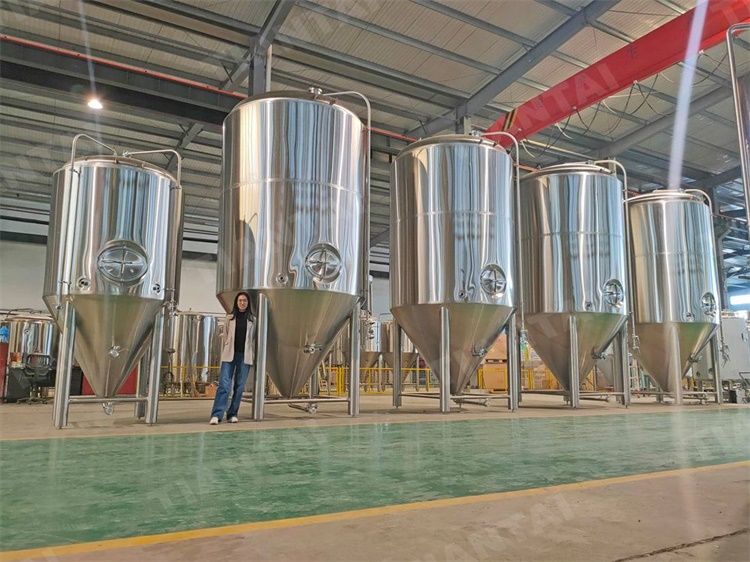What the configuration of brewpub or microbrewery equipment will be?
Introduction: Brewpubs and microbreweries have gained significant popularity in recent years, offering unique and locally crafted beers to beer enthusiasts. The configuration of brewpub or microbrewery equipment plays a pivotal role in producing high-quality and consistent brews. This essay aims to provide a comprehensive overview of the typical configuration of equipment found in brewpubs or microbreweries, highlighting the key components involved in the beer production process.1. Brewing System: The brewing system is the heart of any brewpub or microbrewery. It typically consists of several key components:
a) Brewhouse: The brewhouse is where the mashing, boiling, and lautering processes occur. It includes a mash tun, a kettle, and a lauter tun. The mash tun is used for mixing malted grains with hot water to extract fermentable sugars. The kettle is utilized for boiling the wort, which is the liquid extracted from the mash. The lauter tun helps separate the liquid wort from the spent grains.
b) Fermenters: Fermenters are vessels used for the primary fermentation of beer. They are typically cylindrical and made of stainless steel. Brewpubs and microbreweries may have multiple fermenters of various sizes to accommodate different beer styles and production volumes. The fermenters are equipped with temperature controls to maintain optimal fermentation conditions.
c) Conditioning Tanks: After primary fermentation, beer may undergo a secondary fermentation or conditioning phase in dedicated conditioning tanks. These tanks allow the beer to mature and develop flavors while undergoing carbonation. Conditioning tanks are similar to fermenters but are designed to hold the beer for an extended period.
.jpg)
2. Wort Cooling and Transfer: Once the boiling process is complete, the wort needs to be rapidly cooled to a temperature suitable for yeast fermentation. The following equipment aids in this process:
a) Heat Exchanger: A heat exchanger rapidly cools the hot wort by passing it through a series of pipes or plates that exchange heat with cold water or glycol. This process ensures the wort reaches the desired fermentation temperature quickly and efficiently.
b) Pumps and Transfer Lines: Pumps are used to transfer the cooled wort from the brewhouse to the fermentation vessels or conditioning tanks. Transfer lines, often made of food-grade hoses or stainless steel pipes, connect various components of the brewing system, allowing for seamless movement of liquids between vessels.
3. Yeast Handling and Fermentation Control: Controlling fermentation conditions and handling yeast play crucial roles in beer production. The following equipment assists in these processes:
a) Yeast Propagation System: Brewpubs or microbreweries may have a yeast propagation system to grow and maintain a healthy yeast culture. This system typically includes yeast propagation vessels, stir plates, and temperature-controlled environments.
b) Temperature Control Systems: Fermentation temperature greatly affects the flavor and quality of the beer. Brewpubs or microbreweries employ temperature control systems, such as glycol cooling jackets or temperature-controlled rooms, to ensure consistent and precise fermentation temperatures.
4. Cleaning and Sanitization: Maintaining clean and sanitized equipment is vital to prevent contamination and ensure the production of high-quality beer. The following equipment aids in cleaning and sanitization:
a) Cleaning-in-Place (CIP) Systems: CIP systems are automated or semi-automated systems that circulate cleaning solutions through various brewing system components, such as tanks, lines, and valves. This process removes residue and contaminants, ensuring proper hygiene.
b) Sanitization Equipment: Brewpubs or microbreweries utilize various sanitization equipment, including spray balls, sanitizing solutions, and specialized cleaning tools, to maintain a sanitary brewing environment.
Conclusion: The configuration of brewpub or microbrewery equipment encompasses a range of components, each playing a vital role in the beer production process. From the brewhouse to the fermentation vessels, cooling systems, yeast handling, and cleaning equipment, every element is carefully designed to ensure consistent and high-quality brews. Understanding the configuration of this equipment is essential for aspiring brewpub or microbrewery owners, as it lays the foundation for successful and efficient beer production.
Edited by Vincent
Email: [email protected]



.jpg)


Get In Touch